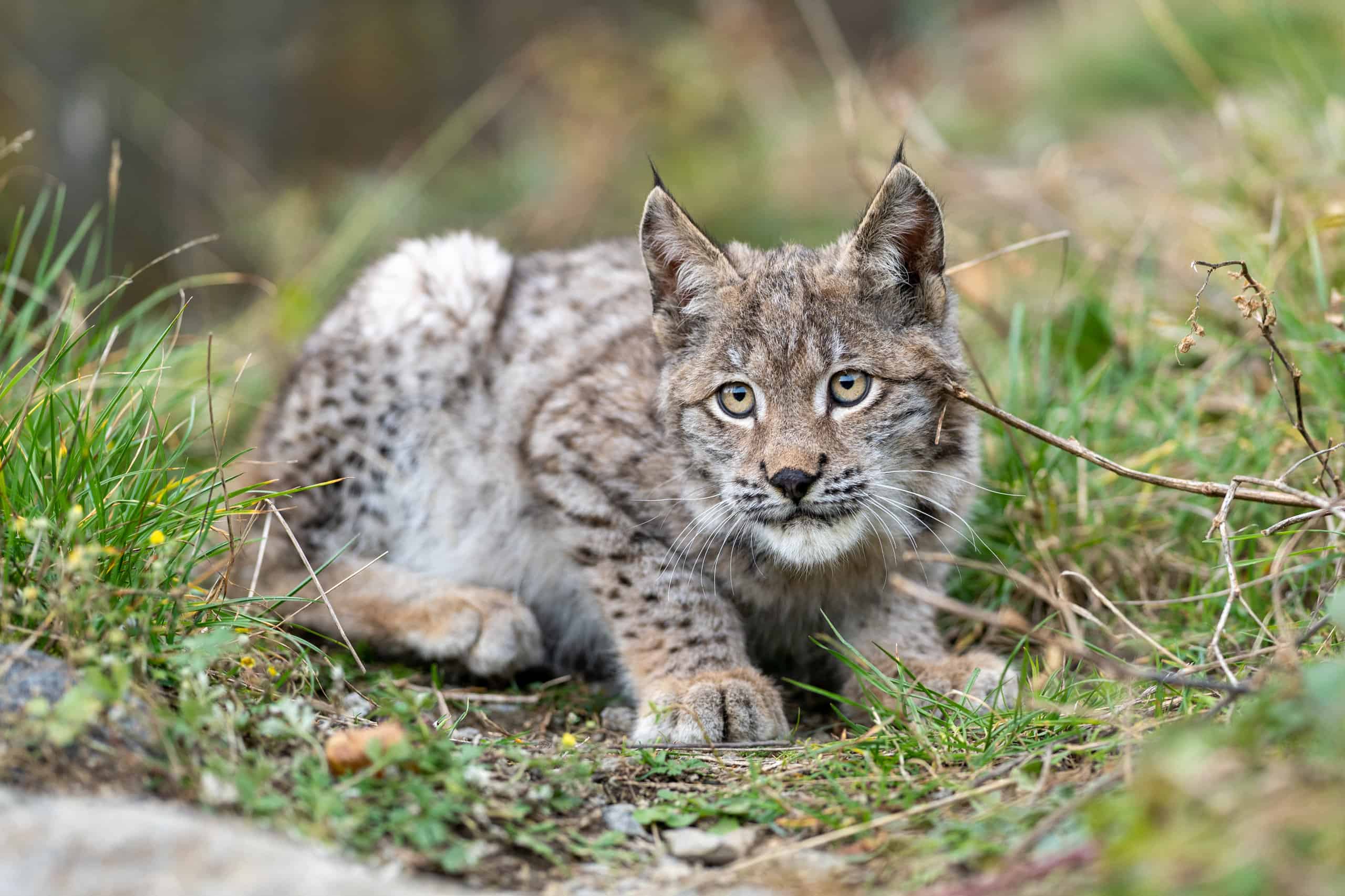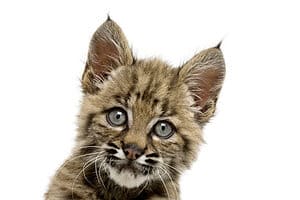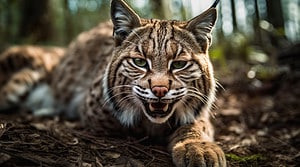From majestic buffalo to elusive black bears, Colorado hosts a wide variety of iconic large mammals roaming through its wild mountains, canyons, forests, and prairies. One of the most fascinating is the bobcat. Though these cute felines look like enlarged house cats, make no mistake, the bobcat is no kitten, but a fearsome predator. The number of bobcats in Colorado is an impressive 12,000! Depending on where you live, camp, or take hikes, it’s possible you’ll catch a glimpse of one in the wild – maybe even closer than you wish. Learn about these predators and their habits, and what to do if you or your pets cross paths with one unintentionally.
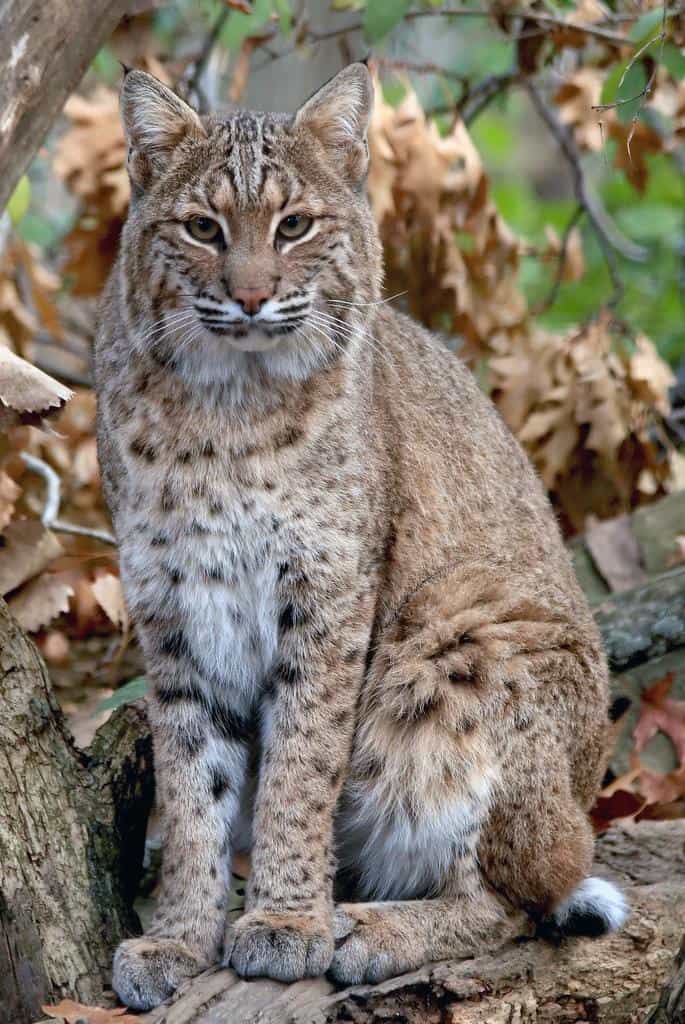
Bobcats have generally brown fur with black spots, white bellies, and white facial accents.
©Becker1999 (Paul and Cathy), CC BY 2.0, via Wikimedia Commons – Original / License
All About Bobcats
Size and Description
Bobcats are large wild cats indigenous to North America. They are sometimes called “wildcats” or “lynxes.” An adult male bobcat is an absolute unit compared to a domestic cat. At up to 40 pounds and 37 inches long, they dwarf the average 8-12 pound, 28-inch-long housecat. They’re a little smaller than a full-grown coyote. True to their name, their short tails, at just 6 inches long, look “bobbed.” They have generally brown fur with black spots, white bellies, and white facial accents. The fur on their cheeks stands out in a ruff and they have furry points on their ears. These kitties have excellent eyesight, hearing, and smell, are heavily muscled, and are armed with sharp teeth and claws. Such hefty carnivores are well-equipped for hunting and self-defense.
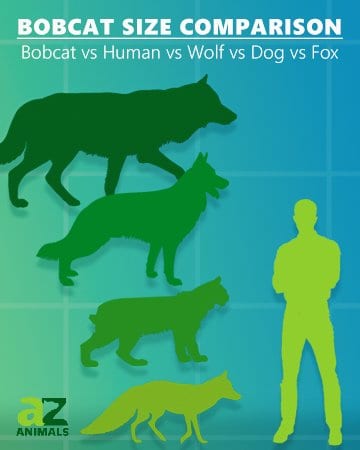
Range and Habitat
Bobcats are very adaptable and can live in a wide variety of habitats, ranging from northern boreal forests to coastal swamps, to deserts and scrublands. Their adaptability to so many different habitats is one of the reasons they are found in almost every state of the continental United States as well as wide swaths of Southern Canada and Northern Mexico. In Colorado, they are most common in foothills, canyons, mesas, and plateaus, where brush and woodland provide cover for them.
Bobcats are solitary and territorial, marking their range with urine and feces. Males will stake out a territory of up to 30 square miles, while females keep a smaller territory of 5 square miles that enables them to stay closer to their dens to care for their young. Males’ territory usually overlaps the territories of several females that he mates with. Bobcats tend to respect one another’s territory to minimize conflicts.
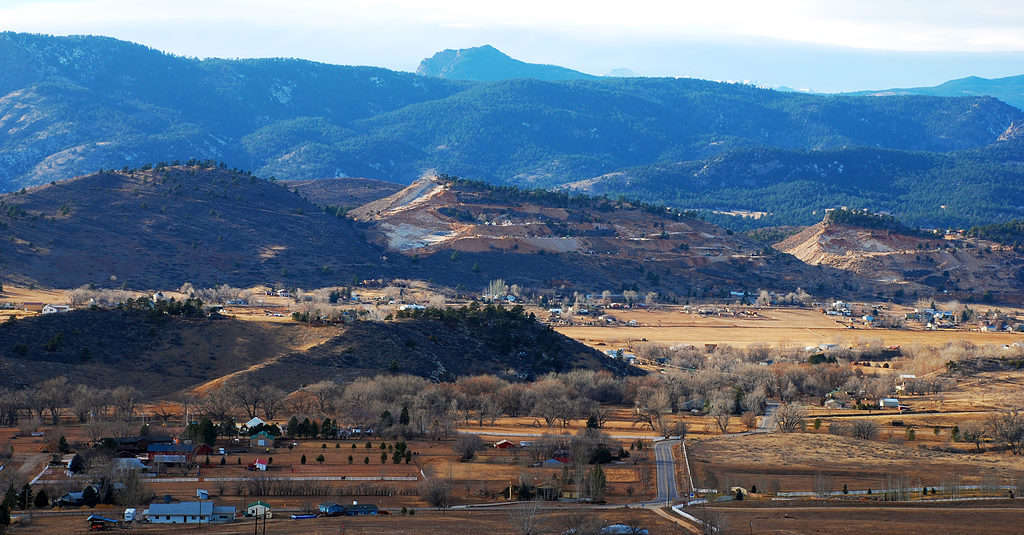
Bobcats in Colorado are most common in foothills, canyons, mesas, and plateaus, where brush and woodland provide cover for them.
©Ann Cantelow/Shutterstock.com
Reproduction
Bobcats mate mainly in the winter, though mating can happen as early as November and as late as August. Gestation takes about 62 days. The mother prepares a den for her family in a hollow tree, cave, or a space under thick shrubbery or tucked away between boulders. She lines her den with moss and leaves to insulate it from the cold. In the spring, she gives birth to two to four “bobkittens” or simply “kittens.” The mother drives the male away at this time, but he will continue to roam around the area, keeping his distance from the fiercely protective mother. The kittens nurse for two months and then travel with the mother for three to five months, learning to hunt and survive on their own. They leave her for the winter mating season. Female bobkittens are sexually mature after one year, and males mate after they turn two.

This bobkitten is adorbs, but in a year it will grow into a truly fierce predator.
©Ultrashock/Shutterstock.com
Diet and Ecological Role
Bobcats prey on small mammals such as rabbits, rats, mice, and squirrels. Occasionally they will take on deer who are young or enfeebled by age, injury, or illness. They play a significant role in controlling the population of small herbivores and vermin. If these were left to multiply unchecked, they would spread disease, damage crops, and eat down vegetation. This would have a cascading environmental effect, as the removal of ground cover would increase erosion and water pollution levels.
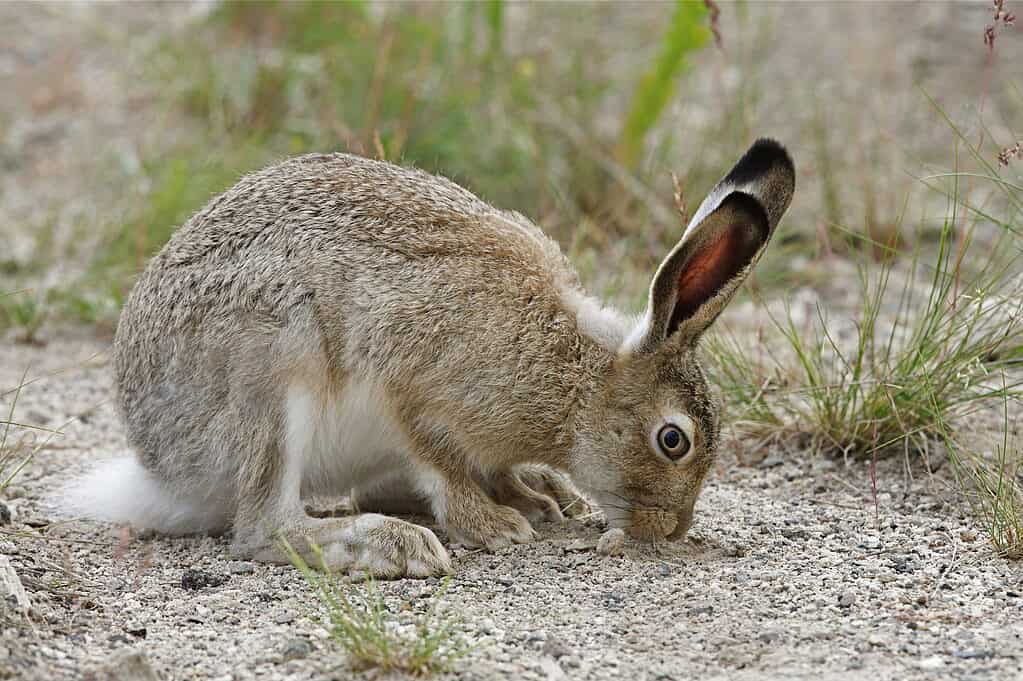
Rabbits, mice, rats, and squirrels are preferred prey for the bobcat.
©Tom Reichner/Shutterstock.com
Conservation Status
With an estimated 1 million bobcats roaming in the wild, they are far from endangered. They are classified as animals of “least concern” by the International Union for Conservation of Nature (IUCN). Their numbers have been increasing since the 1990s, including in Colorado, where they now number more than 12,000. Natural predators of the bobcat include coyotes, mountain lions, wolves, foxes, owls, and especially, humans. Loss of habitat and hunting are the two biggest human threats to bobcats.
In 2022, legislation that would have prohibited bobcat hunting in Colorado was defeated, so it is still legal to hunt them with a proper license. Bobcat hunting season runs from December 1 through February 28. They may be hunted day or night with no bag or seasonal limits. Why do people hunt bobcats? Some hunters simply want to bag a trophy and have a good hunting story to tell. Others want to collect the furs for themselves or to sell, though at $60-90 each, they are not exceptionally valuable.
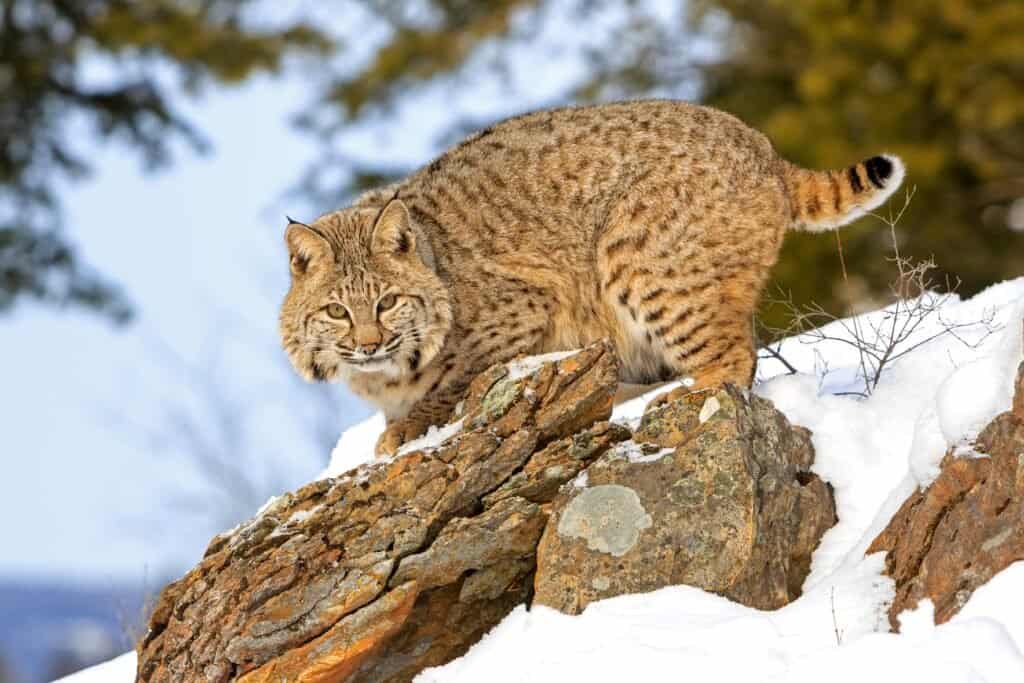
Bobcats in Colorado are most common in foothills, canyons, mesas, and plateaus, but are increasingly seen in suburban areas as well.
©Jack Bell Photography/Shutterstock.com
Why You Might Encounter Bobcats in Colorado
Bobcats are reclusive animals, so if you happen to see one from a safe distance, count yourself fortunate. However, states like Colorado are reporting increasing numbers of dangerous interactions between bobcats and people, both with hikers and campers enjoying the wilderness, and homeowners spotting these cats darting through rural or suburban backyards. With Colorado adding an average of 70,000 new citizens a year since 2010, more land area is being developed and is pushing into the hunting ranges of bobcats and other wild animals.
You might notice a bobcat has been on your property from tracks in snow or mud, with four toes and an “m”-shaped metacarpal pad. Dusk and dawn are the most likely times to encounter an active bobcat. A hungry bobcat might be drawn to your yard in search of small prey, such as squirrels, rabbits, or mice. If you are concerned about pets, unfortunately, fencing is not a practical way to keep bobcats off your property, as they can jump up to 12 feet in the air and can easily climb trees and jump over the highest fencing.

You might notice a bobcat has been on your property from tracks in snow or mud, with four toes and an “m”-shaped metacarpal pad.
©Bobcat tracks in the mud/Shutterstock.com
What To Do If a Bobcat is Too Close for Comfort
Bobcat attacks are rare, as they tend to be timid and will not attack animals larger than themselves unless they feel threatened. A bobcat that is sick, injured, hungry, in the midst of mating season, or defending its young might on rare occasions be an exception to that rule. If you are outdoors and suddenly find yourself way too close to a bobcat, the right response depends on whether you are in your territory or their territory.
In Your Territory
To prevent bobcats from coming into your yard, and to make them leave if they have, you can:
- Remove excess vegetation to deny them hiding spots.
- Put a radio outside set to a news or talk channel to scare them off.
- Install motion-activated deterrents such as sprinklers or lights.
- If you see the animal, use an air horn, yell, or bang pot lids together to scare it off.
- If a bobcat is actively attacking a pet, stay a safe distance away and spray them with a water hose.
In Their Territory
If you’re out hiking or camping, you may have inadvertently wandered into a bobcat’s territory. If one is too close you can:
- Back away slowly, but do not turn around and do not run, as that could trigger the animal’s instinct to pursue fleeing prey. Put as much distance as possible between you and the cat.
- Make loud noises to scare it off, such as banging objects together, blowing a whistle, or hitting your hiking pole against a tree.
- Throw things, like rocks, sticks, a ball, or other possessions from your backpack or campsite.
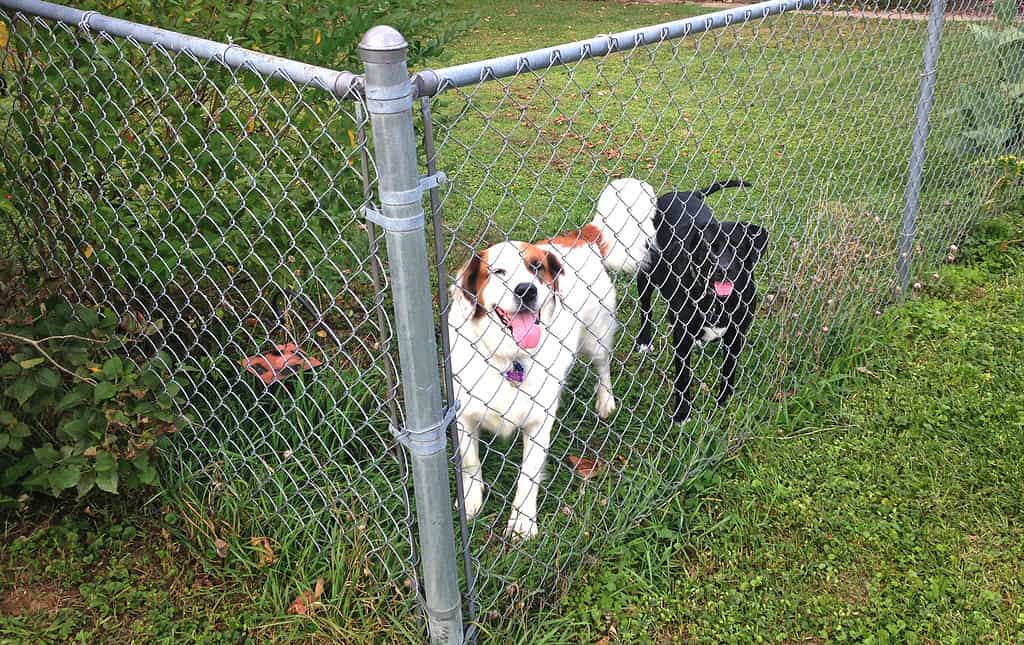
Fencing is not enough to keep pets safe from bobcats. They can leap 12 feet in the air over fences or climb trees and drop down.
©Wendy van Overstreet/Shutterstock.com
Can a Bobcat Breed with a Domestic Cat?
Finally, maybe you’re concerned about a different kind of close encounter. Is it possible for a wild bobcat to breed with your domestic cat? First of all, you will have nothing to worry about if your cat is spayed or neutered. There are 70 million wild and feral cats in the United States, and they are arguably one of the most destructive invasive species in the country. So have your cat spayed or neutered.
But to answer the question, is it physically possible for a bobcat to breed with a domestic cat? No. Aside from the size difference and the unlikelihood of a male bobcat seeing a housecat as anything but food, the reproductive systems of the animals are different, so they cannot produce hybrid kittens. Find out more in this article: Can domestic cats breed with bobcats?
If you’re disappointed because you’d really like to have a bobkitten of your own, check out the pixie-bob. Although some people have claimed it is a bobcat hybrid, genetic testing has proven this breed has zero bobcat genes but is a domestic cat breed selected to produce a bobcat-looking appearance. With all you know about bobcats, we’re sure you’ll agree, it’s a much better option. At least, it won’t eat your dog.
Thank you for reading! Have some feedback for us? Contact the AZ Animals editorial team.

